
Companies have been at a standstill lately due to the talent crisis. It has become harder to not only find employees but retain the ones we already have. This is threatening both our growth and revenue. In this episode, we dive deep into one of the factors that are causing this particular challenge: the generational divide. Joining us is Dr. Kent Wessinger, a People Scientist focused on finding sustainable solutions to cross-generational growth and the Principal Partner at Retention Partners. He brings his expertise to tackle the growing division between generations, especially the relationship between millennials and traditional organizational structures and strategies. He then shares how he is bringing clarity to the workforce crisis, explaining the significance of processes, accountability, and structures of success. Learn from Dr. Wessinger the key insights to keep your employees engaged. Overcome the talent crisis with a doctor’s retention prescription from this conversation.
—
Watch the episode here
Listen to the podcast here
The Doctor’s Retention Prescription With Dr. Kent Wessinger
We are fortunate to have Dr. Kent Wessinger with us as our guest. Dr. Kent is the Principal Partner at Retention Partners. He is what they call a people scientist now, focused on sustainable growth solutions and organizations navigating a workforce crisis. Dr. K is hyper-focused on helping companies with what he calls the three wins of attraction, engagement, and retention of Millennial employees and clients.
As a cross-generational growth strategist, Dr. Wessinger’s research emphatically reveals that many perspectives and processes held by Millennials are not aligned with the traditional growth strategies of now and that non-Millennial leaders are creating a deeper divide between the generations, which is threatening sustainable growth and revenue AKA, they are creating their own brandslaughter. Help me welcome to the show, Dr. Kent Wessinger. Welcome to the show, Dr. Kent Wessinger. Thanks for joining us.
Thank you. I appreciate the opportunity.
I got done covering your bio, but I always like to go back in and because of the concept of this show where we are talking about primarily three things, which are talent, techniques, and technologies and how companies and individuals in leveraging those things can damage their own brand unknowingly, and not paying attention. Sometimes knowingly at the same time.
The goal of this show is to help people prevent brandslaughter within their own company and organizations that they work with. You focus a lot on the talent aspect of the business and more than that, but that’s a big piece of it. Let’s start out by you share a little bit about who you are and how you came up with in the background on like retention partners. I think it’s interesting where it came from because although it’s fairly new, your research is not new. You have been working at this for a long time.
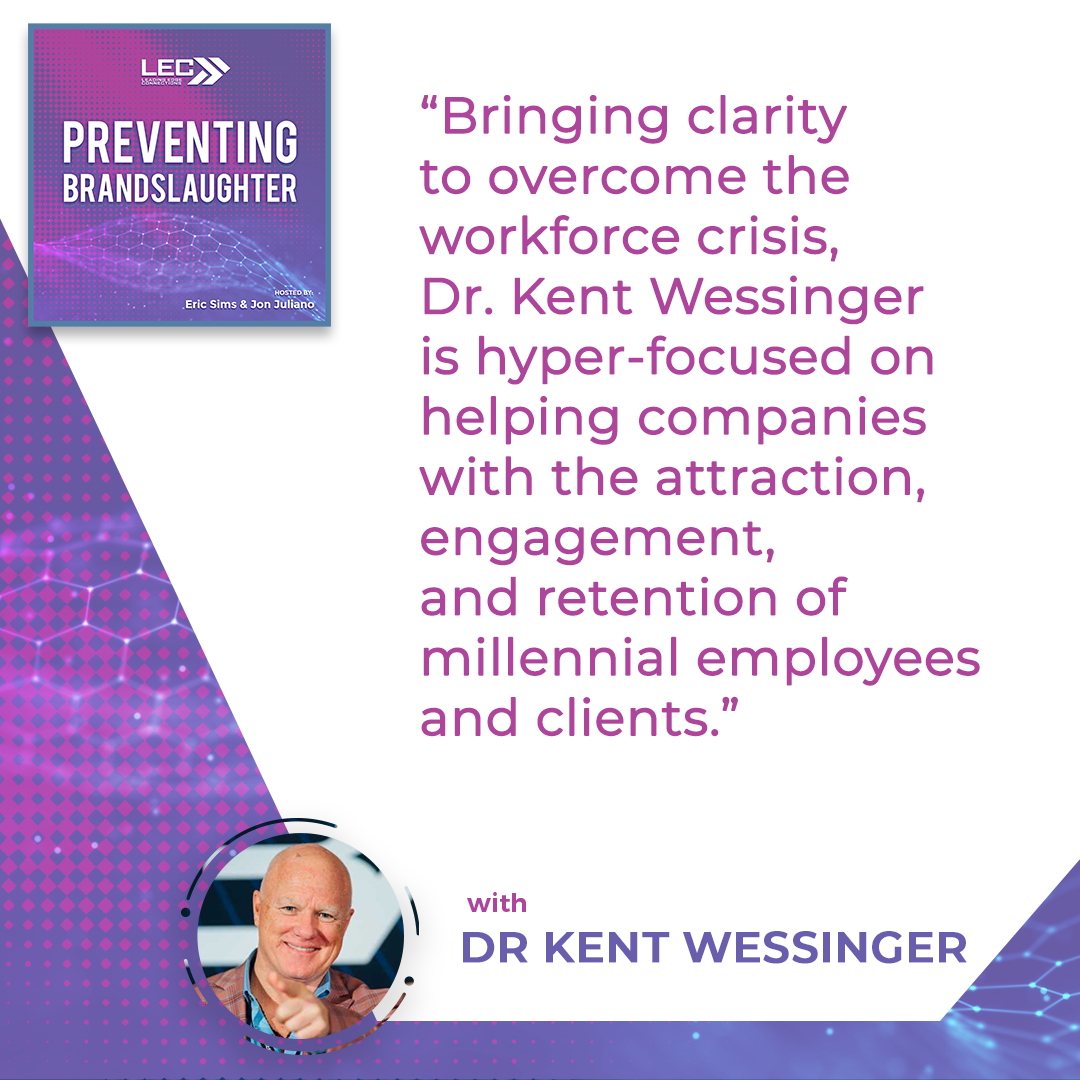
Decades ago, I began to see a workforce crisis beginning to stir and it concerned me. As I began to dig into what was quickly becoming the largest block of the workforce, which was Millennials, I could not find what I defined was credible research, credible data, or even healthy good implementation experiences that we’re solving this.
I begin to see this lack of a better way to say it because people want to call this a tsunami beginning to formulate a way out into the sea. Knowing that, I couldn’t find any good valid research that I thought or I defined that brought truth or light into this. I developed a research project hoping to get 500 participants and focused on one thing. I focused on the relationship between Millennials and organization structures.
Here we stand years after it launched. It’s open-ended because I’m tracking leadership and socioeconomic decisions. Employment decisions and career decisions, all those things. With this generation, as they mature, it has almost 45,000 participants from 27 Nations. It’s been implemented in organizations profit and nonprofit with over 100,000 employees, down to 10 employees.
One of the things that I bring to the table is not research and data, but I bring that implementation experience where that research and data have been tested. One of the things that I like to say to leaders is they say, “What do you bring us?” I say two things, “Clarity and clarity.” When it comes to the workforce, what I have in working with high yielding leaders, because I mainly work with C-suites. When it comes to working with those people, I have realized that they have a very clear vision of what they determine as success and their pathway and track of success.
I have also learned that they don’t have a very clear vision on how to solve their workforce crisis, which ultimately has become an impediment to their success and their sustainable growth. What I do is I bring them this clarity of being able to identify where that pathway is to solve that workforce crisis. I have so many leaders tell me that our growth is not only realistic.
Our growth goals are realistic, our growth goals are attainable, and our growth goals are the best that we have ever had. The problem is we have got this impediment in our pathway that we don’t know how to solve and it’s threatening our growth. The conclusion I have come to from working with so many of those leaders is they don’t have a vision. They don’t know the pathway to overcome that impediment to reach their growth goals.
As a result, what my research tells us is, think about this. In January 2020, the month before the pandemic, 48% of leaders said they were concerned about the future of their company with a Millennial workforce. That has jumped up to 69%, and almost 7 out of 10 leaders say they are concerned about their growth. They are also concerned about what their company’s going to look like ten years from now with a Millennial workforce.
They are concerned because they don’t know how to solve or don’t have the information. They don’t see the pathway. They don’t have the vision to be able to overcome this impediment of this workforce crisis. One more piece of that, because there is a lack of vision and understanding there, what has happened is that many leaders have sought information, wisdom, and data. They are looking for some solution because that concern is so real and that threat is real.
What I have also discovered is that many leaders, they are using one line quips off of social media, LinkedIn, or from leaders that they believe they respect. They are taking these little one-line quips from social media darlings, whether it be some post or something. They are saying, “That resonates. Let’s use that,” and they are coming up short.
The reason they are coming up short is because it’s not rooted in a good and healthy data set. It’s not been tested by any implementation. When I bring clarity and clarity, I bring clarity to the crisis, the workforce crisis, but I also bring clarity to show people where that pathway is and how to overcome those impediments on that pathway to reach and achieve their growth goals.
I know that in the companies that Jon and I work with as our clients. Our company deals a lot with talents, techniques, and technologies as well. We are supplying one or all of those in conjunction with what they may already have. It is a major issue with people when it comes to hiring and retaining the staff necessary.
You used the word crisis. It’s absolutely that at this point in time when companies are losing clients, forcing themselves to change directions unnecessarily, and losing business. We have seen all the catastrophe you can see from this and we touched multiple industries, so we are not focused on one. This crisis is agnostic. It doesn’t care what industry or business you are in. As an example, I was joking with Jon. “I went to get my oil changed. I had the last-minute switch because I’m leaving town, so I couldn’t go to the dealership because they are booked up. I had to try to find an oil change place, which was a nightmare, to begin with.”
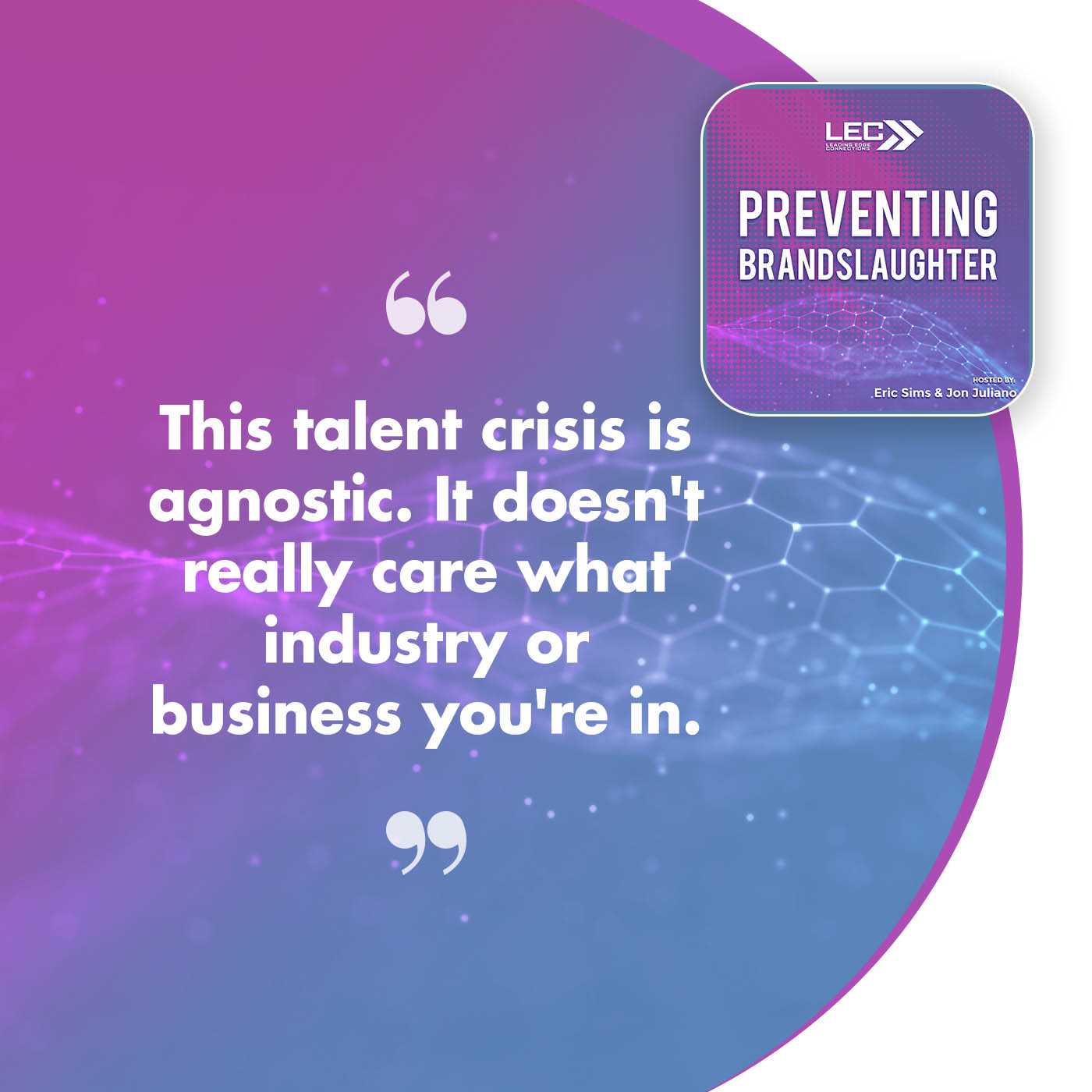
I get there and I’m they are super busy, but I can’t figure out why. I asked the guy and he goes, “We are not busy because we have too much business. We have adequate business. We are busy because we can’t find enough people to come work for us and stay here. I have seven bays, but I have three guys.” I’m like, “This is everywhere.” Retail shops, call centers, financial industry, or whatever it is.
I know that you say the leaders are looking at it and they are picking and choosing, but is it a mindset issue first? From the leadership standpoint, are they struggling to alter their perspective? Every generation, it seems like it looks at the next upcoming generation and says, “Instead of looking at them and saying, ‘That could be the greatest generation that’s ever walked the face of the earth.’” They look at them and pick out all the reasons they think they are not. I know that bleeds into business. Do you see a lot of that type of mindset going on with them or is it a complete lack of understanding? What is it?
I see that every day. I see it from every single leader. Let me give you a data point that goes beyond what my words can say. The research project, which contrasts the perspectives of non-Millennial leaders, Baby Boomers and Gen X leaders, contrasts their perspectives to Millennials and Gen Zs. The very first question says, “What’s the first word that comes to your mind when you think of a Millennial or a Millennial employee?”
From 500 participants to almost 45,000 participants, those first three terms have remained static. They have not changed on either side of the equation. What I know is this. Those perspectives are fairly rigid. What does a Baby Boomer leader think of a Millennial employee? The top three terms entitled, lazy, and selfish. Those are the top three words.
Then what does a Millennial think about their own generation when it comes to their workforce? Creative, innovative, and smart. We see generational conflict right out of the gate in the research project. To your point, it’s a conflict of perspective. I have a lot of leaders that would argue with me. That’s not a perspective. That’s observation. They are using that entitled, lazy, and selfish based on observation, not a perspective.
My point back to them is, “Are you going to achieve your growth goals with entitled, lazy, and selfish workforce?” The answer is unequivocably, “No. Not a chance. Not going to happen,” but can you achieve your growth goals with a workforce that’s creative, innovative, and smart? Then the answer is polar opposite. Absolutely. How is it that we tap into that innovative, creative, and smart workforce?
Not only is that one of the things that I bring to the table as far as a pathway, but I also help leaders understand how we make those modifications. Coming full circle to answer your question, one of the most difficult things that season leaders struggle with the most, right out of the gate with me, is that they believe or there’s this assumption that they are going to have to completely reconstitute the structure of their company in order to have that workforce that’s successful that keeps that workforce in the building, to attract that workforce, or to keep that workforce engaged.
One of the most difficult things that seasoned leaders struggle with the most is that they believe they're going to have to completely reconstitute the structure of their company to have a successful workforce. Share on XThe truth of the fact is that’s a lie. There are a few slight modifications that leaders need to make to successfully make that shift from recruiting the hamster wheel to attracting top talent. There’s only one modification that I continue to say to leaders that will position your employees for a high level of engagement inside the company.
Then there’s only one position also. One step that I would argue that it takes to keep them in the building to keep retention where it needs to be. Those modifications are not great modifications. Not massive monumental modifications, but they do require some intentionality and that intention, in order to get to that place, to intentionally make those modifications, leaders have to have a clear understanding on why we are making those modifications. If they can’t go there, they are going to struggle to survive.
Let me add one more point to that and it’s to what I see that you are doing, and I greatly appreciate it. There are a lot of leaders that have come to the place. They are convinced that if they reach into the past and try to bring their success, all the success and the structures and the models of the past into the present to prepare for an outcome in the future. I have seen that happen over and over again, and I would argue this.
Leaders who are not making those modifications to achieve their growth goals by solving the workforce’s impediment are doing one thing. They are slaughtering their brand. It’s self-inflicted slaughter because this workforce is not only the largest workforce that we have or we have ever even known.
This workforce also is quickly assimilating into a leadership position, not just from a consumer side but also from an organizational side. If we don’t make these modifications, we are intentionally self-inflicting and slaughtering our brand. I want to say I’m not talking about massive modifications to structures but I’m talking about intentional modifications to structures that will help us not only preserve our brand but also will position us on that pathway to achieve our sustainable growth goals.
Diving a little bit deeper, can you tell us what are Millennials looking for from an employer experience and from working experience? Is it different from what Gen X is looking for and keep going back? Is it pretty much the same thing with a different approach?
It’s different. I don’t want to be that guy that propagates that this generation deserves more special attention than any other generation. I don’t want to be that guy.
I don’t think that’s what you are saying. If anybody’s reading that, I will dispute that because I have talked to you before. I think what I’m hearing you correctly, what you are saying is that every generation is a little bit different. Everybody will agree to that. The first thing that we need to accept is that different doesn’t mean wrong. Different means different.
Different doesn't mean wrong. Different means different. Share on XIn the leadership standpoint, I remember growing up and hearing my grandfather talk about my dad’s generation, which is a Baby Boomer. Do you know what he said about Baby Boomers? Lazy and entitled. The same thing. Every generation says the same thing because they think the next generation is not as smart as them or it doesn’t work as hard.
It’s the same cycle of BS that each generation looks back. It goes to a very important point that you have probably discovered, which is companies get married to what made them successful. It’s great to acknowledge what made you successful. Being married to it may not be the right way to approach it because when you are married to it, you are locked to it.
If you understand that what got you to the dance today may not be what gets you to the dance tomorrow. You stay open to that. It’s going to allow you the openness to say like, “Let’s look at things differently and fresh each time.” I meant to interrupt you, but I meant to agree with you that I don’t think that’s where your stance is. It’s let’s be healthy about how we look at generational differences and be open to the fact that because someone’s different doesn’t mean it’s wrong. Just because it’s different to your point, it doesn’t mean we have to make massive complete structural, organizational changes. We can make minor, calculated, intelligent shifts that will help us in our business.
I don’t get the opportunity to say this a lot, so I’m going to unpack this right here based on what both of you said. If I had to target in on ground zero of the workforce crisis, ground zero of this generational transition, especially with Millennials into the workforce. Ground zero is an area that most leaders are super surprised about. It’s twofold. The first is process.
What this generation is saying is that we admire your processes. We know that your processes have positioned the company or the organization where it is now. What’s happened is a lot of seasoned leaders have taken up that whole theory of rigidity. The older we get, the more rigid we get because of the pathways that we have taken. They get rigid in their processes and not realize that their processes have become or been defined by themselves as absolute.
We cannot redefine our processes. Our processes are what guide us here. Now, here comes this new generation that they are not challenging brand and product. They are challenging processes. Some leaders go, “Here we go. That entitled little Twitter. He’s coming to our company. We have been here 30 to 35 years and now they have been in here 2 years or 1 year, and they are challenging our process. What do you mean by that?”
First of all, that employee was very intentional about going to work in your company, in that company. What I mean by attention is they believed in your mission, what you are trying to achieve. They so believe in your mission that they are willing to challenge the processes of which you are engaged, but they are willing to challenge them or want to challenge them from a perspective of not to challenge not to be the smartest person in the room.
They are challenging your processes because they realize they can be better, be more productive, and earn more revenue. They are challenging them because maybe your processes are not effective to their own generation, which is quickly becoming the wealthiest generation alive as well. The challenge to that process becomes offensive for some leaders.
This is the analogy that I use to them a lot. I think about a bowling alley. I’m not a bowler. I have probably owned in bowling less than twenty times in my whole life. When I think about what bowling is, it’s always been the same. We go in, we rent our shoes, we go, we pick out our ball, we grab the ball, and we put our two fingers and thumb in the ball. We walk up to the line and we roll the ball. The objective is to keep it out of the gutter and knock the pins down. That’s the way it’s been.
Here comes a younger generation that walks in barefooted, walks over, grabs the ball, walks down halfway down the alley of the parallel and chunks the ball at the pins and knocks the pins down. What do older leaders do? We get all pissed off. You can’t do that. First of all, you got to have shoes. You can’t throw the freaking ball. You can’t do that. What they are is the outcome, and the outcome is exactly the same outcome as what the seasoned leaders are desiring and what they are shooting at. The process, when it becomes absolute, it becomes a very strong impediment, even threat to the growth of the company.
When the process becomes absolute, it becomes a very strong impediment or threat to the growth of the company. Share on XThere’s process and then the second piece is this, accountability. Any leader that reads this right now, I want to tell you, you can go to the wisest man on the mountain to dissolve your workforce crisis. You can use the greatest one-line quip that you have ever heard. You can go to the best seminar that you have ever heard of, but I’m telling you right now. After nearly 45,000 participants in this research project and hundreds of implementation experiences, I’m telling you there’s 1 gate. There is only 1 door that you have to walk through to solve your workforce crisis. It’s a door that’s shocking to most leaders, and it’s the door of accountability.
I see it growing more intense every single day. Even seasoned leaders are growing more and more timid in holding their younger workforce accountable for productivity. The reason they are growing more timid is because they recognize what it costs. If that employee, if that talent, or if that team leaves the building, they recognize what it costs to replace them. Leaders are starting to recognize what it costs them in that slack of productivity. Until the next employer or team can get back to that place of productivity, the expense is massive. My research shows that it costs us an average of $34,000 to replace one Millennial employee, and that doesn’t even factor in productivity. That accountability, so what’s happening is leaders are getting more timid about keeping employees accountable because they are afraid to leave the building.
Two things, the younger workforce wants to be held accountable for productivity. They want to be in. They are asking you and they are begging you to hold them accountable for productivity. That’s the first thing. The most important thing in this accountability piece is that your model of accountability must be modified. It’s the first modification.
You can’t solve your workforce crisis without a modification of accountability. For ages, accountability has been hierarchical, top to the bottom. The top holds the next layer accountable. The next layer holds the next layer accountable. All the way to the bottom. I can tell you that model of accountability, it’s done and it’s dead. Bury it. Have a funeral for it. Accountability is now reciprocal. I call it from through to. What happens is we hold our younger workforce accountable for productivity, but now our younger workforce is holding the company back accountable for structures of success. They want to be successful in the building, but do we provide those structures of success?
You can't solve your workforce crisis without a modification of accountability. Share on XThe average Millennial in January 2020 stayed on the job for 16 months compared to the average Baby Boomer of 19.1 years. My research shows that the average Millennial is only staying on the job for eleven months. That’s pretty stunning. The second piece of that is when we begin to ask why 11 months and begin to dig into 11 months, this is what else we discover. We discover that those Millennials that left at 11 months had already filled out a CV, an application, or a resume to move on at 6 months. The question then becomes, “Why would you do that?”
It’s very clear. According to the research and implementation experience, when they come into your company, when they buy into your mission, and when they see what you are offering, if you do not have those structures of success that they believe will facilitate your structures of success, they are not staying because every Millennial wants the same thing, success. If there are no structures to facilitate that success, which we can unpack, they are not hard, I can tell you that this workforce is smart enough and wise enough to go, “I’m moving on until I find a company that will have structures that will facilitate my success.”
What we know from the research and implementation experiences, when they find those companies, they don’t leave. They stay, they grow, and they achieve their growth goals. They become valuable team members. Extraordinary team members, I would even argue. If we are not allowing the employees to keep us accountable as leadership for those structures of success, we are not going to be able to keep them in the building. We are going to struggle to keep them in the building.
Can you dive a little bit deeper? When you talk about structures of success, what specifically are they looking for? I’m not asking you to give away the whole recipe here, but maybe a little bit of context would be great.
The recipe is public knowledge because I espouse it all over the place on purpose, much to the chagrin of my partners. The research shows that 86% of all resources allocated to human resources departments, 86% is allocated toward recruitment. We have 86% of those resources that are going to recruit. That’s why we have so many companies on the recruiting hamster wheel. Only 4% are allocated toward engagement and only 10% are allocated toward retention.
Looking at those numbers, you go, “No wonder you can’t stop recruiting. No wonder you can’t get off the recruiting hamster wheel. You are not putting a lot of effort in retention and especially engagement.” I would argue out of that equation of recruiting, which I’m going to call attraction, engagement, and retention, most people say, “We got to retain.”
The critical piece of that is employee engagement. Where we have no employee engagement, we cannot keep them in the building. The question becomes, what structure facilitates that growth of employee engagement? I have narrowed it down to one thing. It’s a healthy, thriving, and intentional mentorship structure inside the building.
It’s the most emphatic piece in all the research. Eighty-one percent of all Millennials say that mentoring is essential to their success. Seventy-nine percent of Millennials say that they want success modeled for them. Seventy-six percent of Millennials say, “We want the core values and the leadership wisdom from the generations before us.”
I have also discovered that the research says that only 23% of all companies have a thriving, effective mentorship structure. I want to put a footnote to that. I believe everything in the research because it’s been implemented many times. I can tell you that 23% of leaders who say that they have a thriving working leadership that’s a lie from the seventh layer of hell because I have yet to find one.
I was going to say, “Before starting LEC, Jon and I were in Corporate America. There are a lot of reasons we left, but one of them was I was involved with several mentoring programs that I’m not going to take credit for developing. One thing I noticed was that you are looking at this generation or this group of people and saying, “We are going to mentor you.”
You are creating a process of mentorship that is rigid and archaic that doesn’t fit their style of learning, communication, and collaborate because they are very collaborative, and so they don’t want to participate. The leadership steps back and goes, “This generation doesn’t want to learn. They don’t want mentorship.” They are like, “No. They don’t want grandpa sitting down and yelling at them for an hour, telling them all the reasons that they suck.”
They want to learn from you to your point, but is that what you are seeing too? This is the unknowing part you are killing. You think you are doing something good. You said, “We know they want mentorship. That’s a great idea. You build a mentorship program that is not conducive for them to thrive, grow, learn, and be successful, so they reject it and move on, or you don’t get as much out of it. Do you see that happening in multiple capacities?
When I saw this theme developing in the research, I was one of those that was extraordinarily blessed right out of the gate. My very first client turned out to be the fifth largest financial services company in America, and they are still a client now, and the research has been implemented all through their structure.
When I first saw this mentorship piece developing, we sat down as a team and decided to implement a mentorship structure throughout the entire state of Florida. A year later, it was the biggest fail of my freaking life. It was a monumental fail, and I was like, “How do I recover from this? I don’t understand.” How can it be the most emphatic piece in the research and be a failure of epic proportions?
What I did was I began to dig down into why it failed and I discovered a couple of things. First of all, the main reason that it failed was not because Millennials didn’t want to be mentored. The main reason it failed was because mentors were bailing on the process. The question became, “Why are mentors bailing?” It’s very legitimate why they were bailing.
First of all, they weren’t hired to be a mentor. That’s a compartmentalized note, but second of all, they were failing because it became too weighty. What book do I read? What do I have to say? What lesson am I going to teach? That weight became too much for them and it began to take up too much time and they bailed on the process. That’s one side of the coin.
From a Millennial side, why did it fail? What we discovered was that Millennials do not define mentorship the same way that I did. I didn’t practice what I preached. What I did is I implemented a mentorship structure of how I defined mentorship, not how of the generation that I’m trying to reach that’s asking for mentorship.
The way they define mentorship, and this is where the success has been. We have almost 10,000 mentors and mentees across nine states, and this is how they define mentorship. Not the old White sage speaking into the young bucker dough, but they see it as a small group, a collaborative process. We have small group mentoring that’s going and look all those mentors, they are not all Baby Boomers and they are not all Gen Z. We have a lot of Millennial mentors, especially older Millennial mentors that are absolutely killing it out there.
That small group piece was huge. The second piece, and I would argue this is the biggest piece, is that Millennials didn’t see success confined to what they were doing in building the company. They see success as whole life. They don’t see it as some fragmented process. They see success as, “Am I successful at home, my relationship, my house of worship, my career, my education, and my communication skills?” I can go on and on.
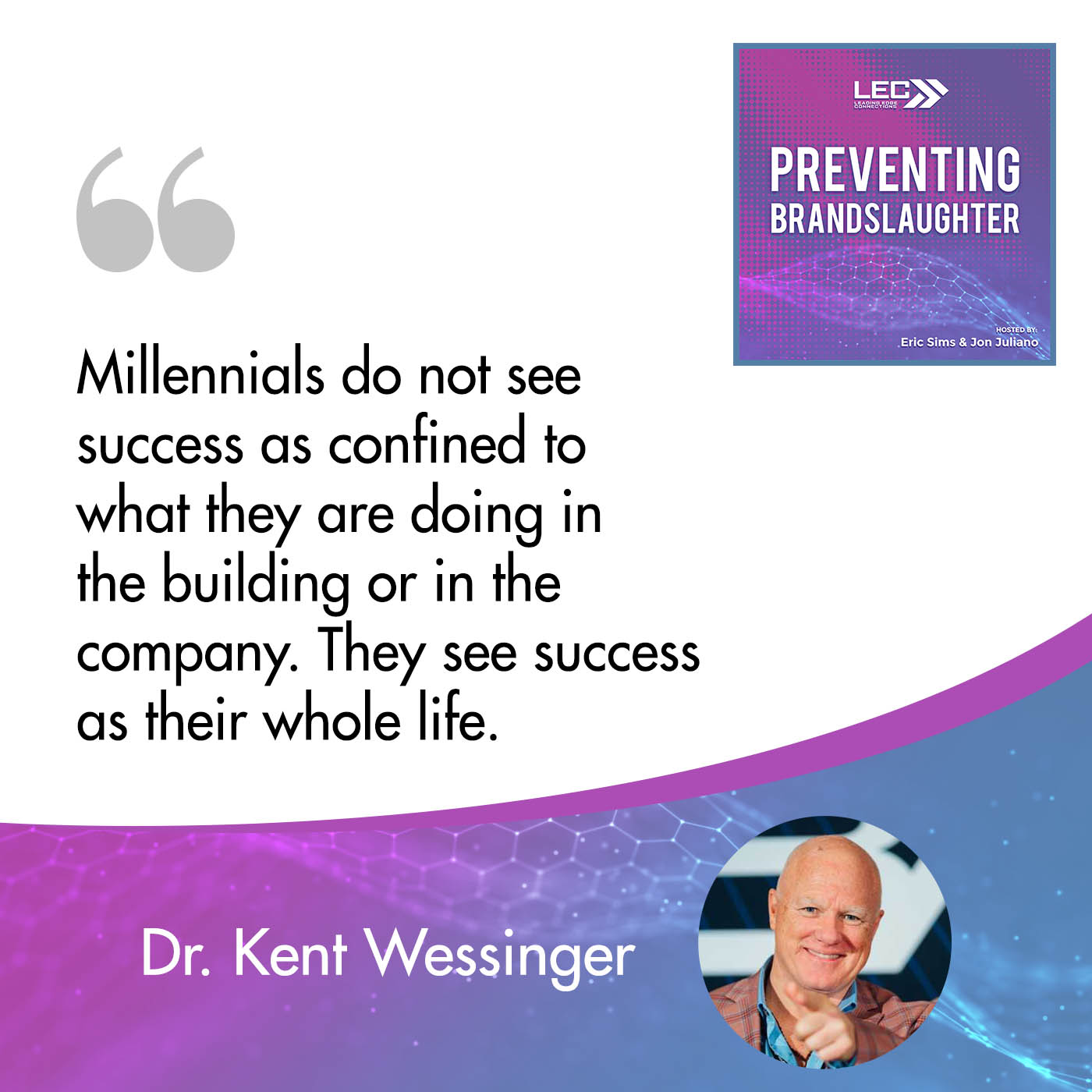
What we did is we developed a whole life mentorship structure not one that was focused on the career track. The conclusion that we have been able to not only verify but we can speak very hard into that has been this maybe a little bit of a myth or assumption for many years, is that a happy and whole person at home is a more productive person in the building. A person that’s more productive in the building that is whole, has good clarity and maybe some peace is a much happier person in the home. It’s a win-win for everybody.
The last piece of that is this. How do we do this whole life mentoring when we have got genuinely believe that, “By the end of next year, the way that the mentorship structure’s going, we will have over 100,000 mentors and mentees across the country.” I personally write the mentorship lessons every single month and send them to the mentors.
The mentors have no weight on what to talk about. It’s two pages. They have analogy and open-ended questions, and maybe some dialogue. They can get the mentorship lesson and read it word for word, or they will get it on the first day of the month, or they can take it and put it in through their own words. They are not having to sit around and come up or derive some big fancy lesson.
We speak 70% into life. The last 30% is focused on the building, and there’s one question that every single mentor asks. For example, a mentorship structure, I will call them HRC. It’s a big landscape architecture firm in Atlanta. Every mentor, every month that they meet asks every mentee the same question at the very end, “What can I do to help you succeed inside HRC?” It’s the same way across the board. Seventy percent focused on whole life, that last 30% is focused on success in the building.
As we have tracked these mentorship structures, this is what we know on the backside, the part that a lot of people aren’t talking about. I have companies that are using their mentorship structures to recruit new employees. I have companies that the data points tell us this. I will use the exact number. Their retention levels have increased 63% with their mentorship structure within three years of launching the mentorship structures.
Employees know. If employee A gets offered a dollar more an hour to work for a competitor, they also say, “Is there a mentorship structure there?” The answer is no. We see employees staying in companies for less pay that have the mentorship structure because they become so reliant on it and it becomes such a critical piece to their health and their whole life.
My oldest daughter is a Millennial. I know that she’s been doing her internship. You talked to Peyton before the show. She does a lot of stuff for the company. I ask her a lot of questions on what she likes and doesn’t like, and we have business conversations and personal conversations. Her answers aligned very heavily with what you are saying, which is money is important and the company is important, but it’s more of a holistic look at life of like, “How is this going to enable me to be the person that I want to be right around the clock?”
That’s interesting because I don’t know that a lot of companies have a look at it that way initially. I think they try to in saying like, “We are going to create this little program over here or this little thing over here. We are going to go bang on houses with Habitat for Humanity once a month or once a quarter.”
Not that that’s a bad thing. I’m saying it’s almost like I look at incentive programs. Sometimes they are like sugar. You try to get a little sugar kick and get a rise out of people temporarily because you are getting sugar spikes versus giving them something that’s holistically better for them that helps them grow and become bigger, better, and stronger as a person.
That’s extremely valuable information for somebody that’s reading the show to digest. A mentor program needs to consist of some components, but it’s got to start with first like, “What do they want? How do they learn? How do they want to be mentored?” I think that’s extremely powerful. What have you seen be the biggest moment of brandslaughter that you have come across with an organization? I’m not asking you to say the name of the company or anything, or maybe it’s a practice. Is there one thing that you have seen like this is, without a doubt, the dynamite that blows up in people’s faces that I have seen consistently?
I would say most leaders are saying a lot of leaders, when it comes to the brandslaughter, I don’t give up what those Millennials think or say. We are going to move on. I have had even a couple of leaders articulate this to me. We don’t care. We are going to circumvent them. We are going to go to the next generation, Gen Z. I’m like, “Who do you think is parenting Gen Z? Who do you think is raising Gen Z? Do you think Gen Z, from your perspective is going to be exponentially better?” From your perspective. That’s a lie from hell. That’s not the case at all.
That mindset tells me they need to bank on robots. I would put more faith in robots if I had that mindset to say like, “I need something I can personally program to be like me. That’s where I’m putting all my money if I’m not willing to look at generational differences and be open-minded.”
Then proceed to drive your business off the cliff.
Think about this. This is a fairly well-documented case study that came out 2022. Go into any city in America that has a McDonald’s, Starbucks, Taco Bell, and Chick-fil-A. Those four restaurants. You go into any city that has all four of those. You take the revenue from Taco Bell, Starbucks and McDonald’s. You combine it and you multiply it by two, you get the revenue for one Chick-fil-A. The question becomes what and why.
The Cathy family still speaks it until now. “We are not in the chicken business.” Think about that. “We are in the people business.” All those other companies are in the revenue, business, or business. They are in what else. They will try to monetize robots. Chick-fil-A is going to continue to kill it because they are in the people business and they provide structures of success for their people. When we focus on our people, we are going to succeed.
When we focus on our people, we're going to succeed. Share on XJon, do you have anything else while we are sitting?
This has been great. It validates the thoughts that I had in my mind coming into this.
I almost feel like we should bottle this up and charge for this episode because there are so much good content that can’t be given away for free. Dr. Kent, it’s a pleasure speaking with you. You are doing amazing work as a friend and resource for us. I look forward to every conversation and post you put out there because I think you are evangelizing a message that’s so important right now for companies if they open their ears to listen a little bit.
They could not only save their organization, but help them become the next big thing in their industry. If people out there are reading this and are trying to get in touch with you. They love what they are hearing and they want to learn more or inquire with you about how your services, what’s the best way for somebody to get in touch with you?
The best way is to go to GetStarted@RetentionPartners.com. If you don’t want to do that, go to my LinkedIn profile, send me a message. I promise you I will message you back. There’s a lot of information about who I am, the research project, the implementation experiences, and all of those things that I believe would be beneficial in helping you make some decisions.
One of the things I even have here I will default to my Baby Boomer perspective, but I have a little bit of a process when I help companies. One of the processes that I have is speaking directly to the decision-makers, the leadership in the companies. In the beginning, a lot of leaders wanted me to go to client-facing employees and help them develop strategies to effectively attract, engage, and retain. Also, the piece that we didn’t talk about that very few people are talking about is how we attract that Millennial client. I will come back at another time and we will talk specifically about Millennial clients. That’s a whole subject point right there.
There’s a teaser for episode two.
I went in and did that without buying from the leadership, which wasn’t sustainable. I go in, talk to the leadership, and then we do strategy development. We implement that mentorship structure, and then we activate the idea revenue-generating voice of that generation, which is the key to retention of those three pieces, and what they require is this. I’m not a cheerleader. I’m not God that’s going to come in and when I leave, you are going to go, “We are going to conquer the world.” I’m not that God.
Who am I and who are we as retention partners? We are going to form a relationship with you and that relationship we are going to form with you, we are going to take you on a journey to help you achieve your growth goals and overcome these impediments that keep you or threaten those growth goals. If you don’t want a relationship, you probably got the wrong guy.
I’m a world-class smack talker. This is what I want to tell you. If you don’t want to go on that journey with me or with us, you go find somebody else. If you go find somebody else, what’s going to happen is you are going to run into a dead end and you are going to come back and it’s going to cost you more when you come back, and I can tell you that has happened over and over again.
I’m not saying that I’m the end-all be-all, but I am saying that the implementation experiences in the research, they are unrivaled with any implementation and research in the world and that’s what leaders tell me every single day. My mission is to help leaders achieve their growth goals by solving this impediment called their workforce crisis, which requires me to develop a relationship with you.
Our readers hopefully will take note of that. If they have questions, as he said, reach out to him. He’s glad to talk to anybody via LinkedIn or his website. You can fill out a form. Dr. K, thank you for being on the show. We appreciate it as always, and I’m going to hold you to it. We are going to have another episode at some point in time where you can come back and share a little more about what you are doing out there with the recruiting and traction piece and the Millennial clients. A lot more. Maybe it’s a three-episode deal. Maybe it’s a trilogy that we do with him, but I appreciate you being on the show. It’s been a lot of fun, and we hope everybody’s enjoyed this episode.
Thank you. I’m honored.
Important Links
- Retention Partners
- GetStarted@RetentionPartners.com
- LinkedIn – Kent J. Wessinger, PhD
About Dr Kent Wessinger
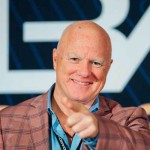 Dr. Kent Wessinger is a People Scientist focused on sustainable solutions to cross-generational growth, with an emphasis on attraction, engagement and retention of millennial employees & clients.
Dr. Kent Wessinger is a People Scientist focused on sustainable solutions to cross-generational growth, with an emphasis on attraction, engagement and retention of millennial employees & clients.
In 2016, he launched and continues to manage what many C-suites have called the foremost proprietary data bank on growth and revenue with millennials. He has successfully helped Fortune 500 financial services companies, engineering firms, manufacturing companies, nationwide real estate and insurance firms, governments in North and Central America, non-profits, and many small businesses develop a relevant strategy to solve their workforce crisis.

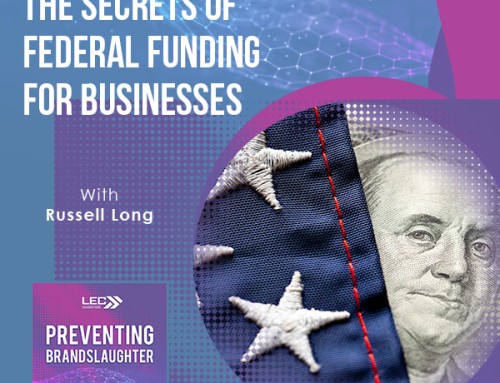
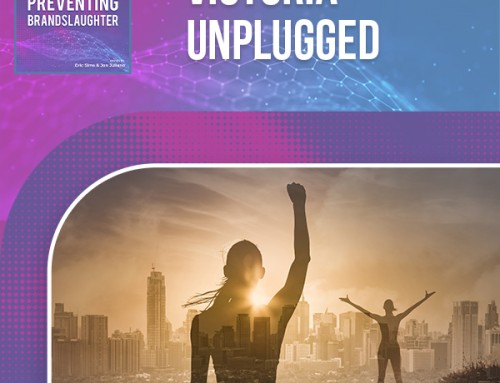
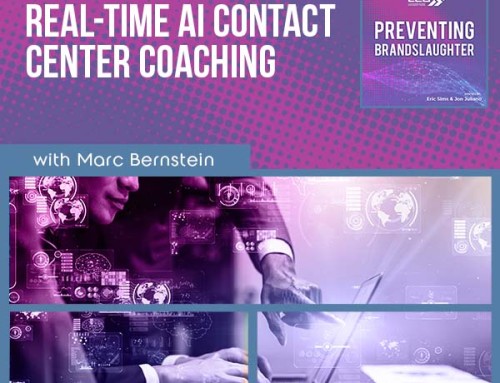
Leave A Comment